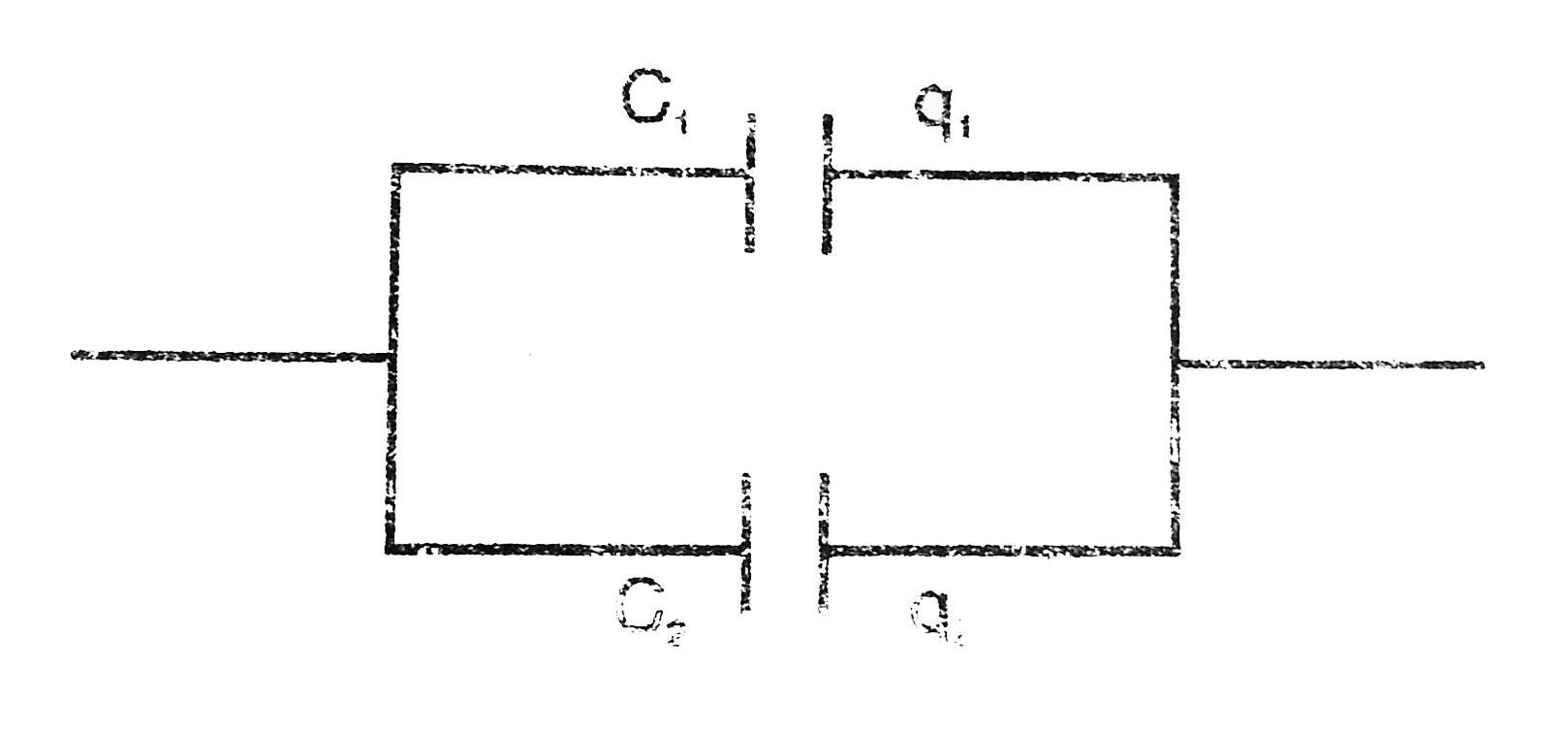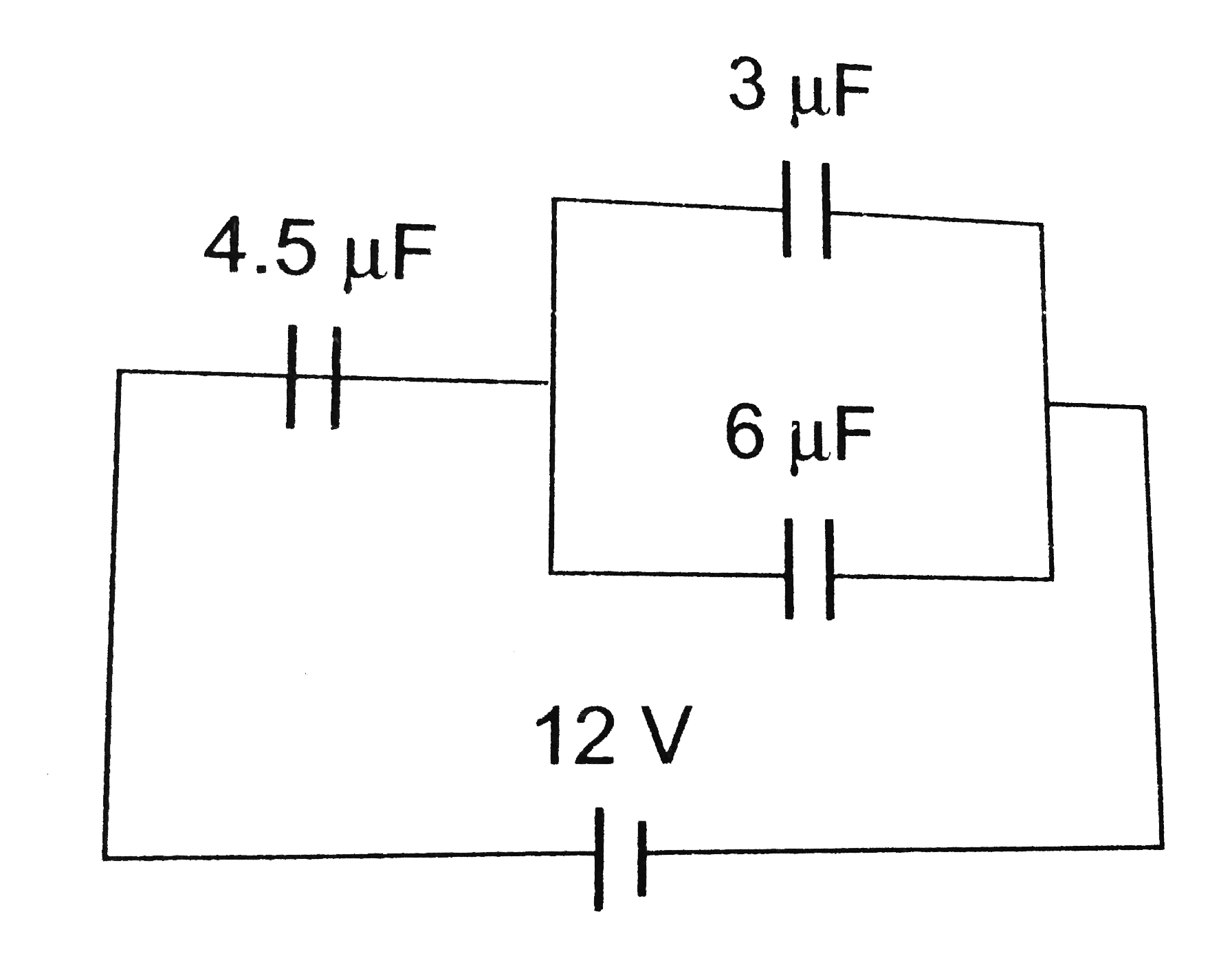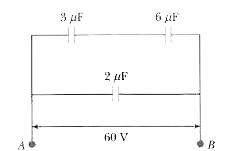A capacitor is charged o a potential difference of. It is connected to an uncharged capacitor of capacianceWhat will be the new polential diffeernce across the 100 pF capacitor?
Uncharged capacitor of capacitance
Total charge
When the charge capacitor is connected with the uncharged capacitor
q_1 / C_1 = q_1 / C_1
or q_1 = 5 q_2 q_1 = 20 xx 100pFv_1 = q_1 / C_1 = 20 xx 100 pF / 20 pF = 20 V

Topper's Solved these Questions
- BOOK - HC VERMACHAPTER - CAPACITORSEXERCISE - Exercise2videos
CAPACITORS
- BOOK - HC VERMACHAPTER - CAPACITORSEXERCISE - Objective 27videos
CAPACITORS
- BOOK - HC VERMACHAPTER - BOHR'S MODEL AND PHYSICS OF THE ATOMEXERCISE - Exercises46videos
BOHR'S MODEL AND PHYSICS OF THE ATOM
- BOOK - HC VERMACHAPTER - DISPERSION AND SPECTRAEXERCISE - Exercises11videos
DISPERSION AND SPECTRA
Similar Questions
A 10μF capacitor is charged to a potential difference of 50V and is connected to another uncharged capacitor in parallel. Now the common potential difference becomes 20 volt. The capacitance of second capacitor is
View SolutionA capacitor of capacitance 2.0μF is charged to a potential difference of 12 V. It is then connected to an uncharged capacitor of capacitance 4.0μF. Find (a) the charge flow through connecting wire upto study strate on each of the two capacitors after the connection in μC (b) The total electrostatic energy stored in both capacitors in μJ (c) the heat produced during the charge transfer from one capacitor to the other in μJ.
View Solution
Knowledge Check
- Question 1 - Select One
A 10μF capacitor is charged to a potential difference of 50V and is connected to another uncharged capacitor in parallel. Now the common potential difference becomes 20 volt. The capacitance of second capacitor is
A10μFB20μFC30μFD15μF - Question 2 - Select One
In the circuit shown in the figure, the potential difference across the 4.5μF capacitor is
 A8/3 voltB4 voltC6voltD8volt
A8/3 voltB4 voltC6voltD8volt - Question 3 - Select One
A capacitor or capacitance C1 is charge to a potential V and then connected in parallel to an uncharged capacitor of capacitance C2. The fianl potential difference across each capacitor will be
AC1VC1+C2BC2VC1+C2C1+C2C1D1−C2C1
A capacitor of capacity 2μF is charged to a potential difference of 12V. It is then connected across an inductor of inductance 6μH. What is the current (in A) in the circuit at a time when the potential difference across the capacitor is 6.0V?
View SolutionThe charge stored in a capacitor is 20μ C and the potential difference across the plates is 500V .Its capacity is ..?
View SolutionIn the circuit shown in the following the potential difference across the 3μF capacitor is
 View Solution
View SolutionA capacitor of 8μF is charged to a potential of 1000V.The energy stored in the capacitor is ......
View SolutionA capacitor or capacitance C1 is charge to a potential V and then connected in parallel to an uncharged capacitor of capacitance C2. The fianl potential difference across each capacitor will be
View Solution
